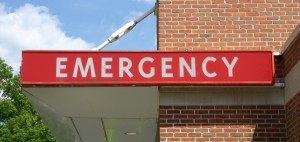A potential ER visit…
In October, I was speaking at Children’s Medical Center at Legacy about data results on emergency room (ER) overcrowding in North Texas. Generally, people expect uninsured, Medicare and Medicaid patients to make more ER visits due to their lack of access to a primary healthcare provider. We also discussed the excessive use of the ER and timing issues for potential ER patients.

During the meeting, I received a call from my son’s preschool — he had 102-degree temperature. While driving with my husband to the preschool, we were discussing the options for our son’s treatment. We called our pediatrician’s office and learned they were closed for lunch. My husband suggested we should immediately take him to the ER.
I was speechless. A few minutes ago I was detailing the results of ER overcrowding including visits by insured people. Now I was truly experiencing such a situation!
While my husband insisted on visiting a local ER, I quickly tried other options. I contacted an urgent-care facility in our neighborhood. I also visited the pediatrician’s office near my son’s preschool. I literally banged on their door during lunch and asked them if they could see my child as soon as possible. Luckily, there was an appointment available. Our son was seen by the pediatrician and diagnosed with a sore throat. Antibiotics were started and he was fine.
The coincidence of this incident combined with my research on ER overcrowding was a learning experience. Suddenly, I was in the role of a potential insured ER user. I witnessed first-hand the instinctive reaction of “Why not?” on my husband’s face. We had good insurance coverage and encountered the limitations of an inconvenient primary care provider. During our moment of family crisis, we immediately turned to the bigger and better equipped ER facility.
This is one of the biggest challenges for ER facilities as more people join the insured payer group after the Affordable Care Act. Besides expanding access and improving the quality of primary and urgent care, efforts should be made to develop trust between primary care providers and insured patients who prefer the ER. Unless we provide equally consistent 24-hour primary and secondary care outside of the ER, changing the perception and behavior of users will continue to be challenging.
